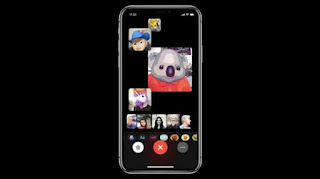iPhones are great at some shots, not-so-great for others. The key is lighting.
The human eye is an astounding example of evolutionary adaptation. The eye can look at a scenes with highlights thousands of times brighter than the shadows without being aware of the dramatic differences.
Cameras aren’t so capable (at least not yet), especially the tiny cameras built into smartphones. One limitation is the ability to capture enough light to create a noise-free image … a limitation is most apparent when shooting in dim lighting. A second limitation, the one of concern here, is the ability to accurately capture the full range of tones from highlights to deep shadows. The tiny sensors of a smartphone camera limit the ‘dynamic range’ of the cameras.
Here’s an example where a smartphone can excel …
It’s a colorful scene, with overall even lighting, and without huge difference in lighting between the brightest and darkest. This situation is in the sweet spot of a smartphone camera.
Shooting landscapes with the sun on your shoulder or at your back can give very good results, like these (shot with an old iPhone 4S):
You can extend the sweet zone by using the HDR feature of your smartphone. This causes the camera to take two or more shots in quick succession, each with different exposures, and combine them in such a way to preserve both highlights and shadows. Here are examples. Notice how the bright sky retains color while the deep shadows retain some detail.
Now here are a couple which are beyond the capabilities of a smartphone. You can see how the highlights are beginning to be washed out, or lost completely, in the brightest areas …
There are few things you can do to work around these limitations:
- When taking your photo, touch your finger to the spot on the photo with the most important features. This will cause the camera to focus and expose for that area.
- Turn on HDR when faced with difficult lighting situations such as sunset shots or bright backgrounds.
- Use the Photos app to recover highlights and shadow areas in photos with extreme dynamic range.
In a nutshell, its about being careful about lighting. While a smartphone camera has limitations, especially when compared to high end dslrs, they can deliver good results if you stay within its sweet zone of exposure.
Thanks for the A2A.

No comments:
Post a Comment